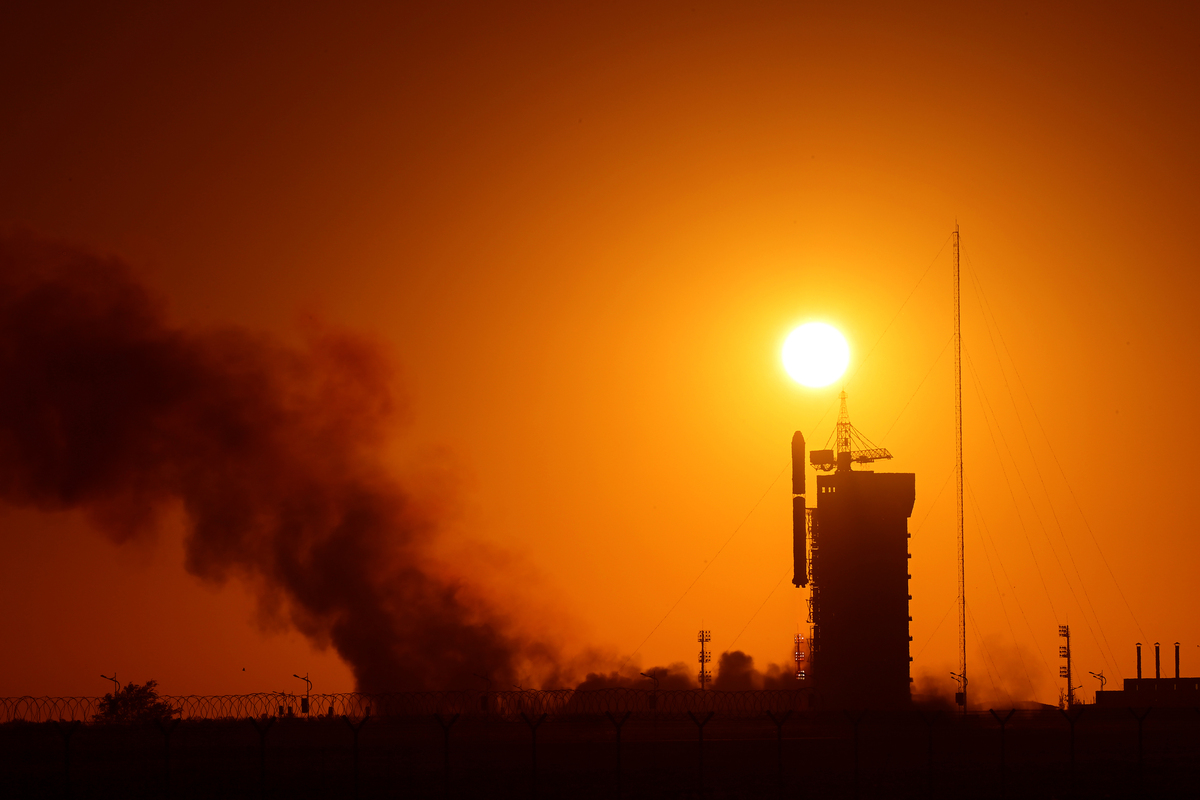Space telescope to keep an eye on sun


Telescope: Mission opens new chapter in solar study
China launched its first comprehensive space-based solar telescope on Sunday, allowing scientists to capture and study unprecedented images of the sun during its most active phase, known as solar maximum, a period of intense solar activity set to peak around 2025.
The Advanced Space-Based Solar Observatory, or the ASO-S, will provide critical insights on the two most violent activities of Earth's closest star: solar flares and coronal mass ejections, along with the powerful radiation and complex magnetic fields they generate.
Probing these phenomena will help scientists understand the turbulent space weather created by the sun, which can potentially knock out infrastructure and sensitive equipment on Earth and in orbit like satellites, electronics, power grids and internet services.
The telescope is nicknamed Kuafu-1, after a giant in Chinese mythology who chased the sun. It was launched by a Long March-2D rocket from Jiuquan Satellite Launch Center in Northwest China's Gobi Desert.
Last year, China launched a small, experimental satellite called the Chinese Hydrogen-Alpha Solar Explorer to study solar flares and serve as a precursor to the ASO-S.
To examine the upcoming solar maximum period, countries around the world have launched multiple sun-gazing space observatories in recent years. These missions include NASA's Parker Solar Probe, the European Space Agency's Solar Orbiter, and India's upcoming Aditya-L1.
Gan Weiqun, chief scientist for the ASO-S, said that since 2010, China has ranked second in the world regarding the number of papers published on solar physics, but most of these studies were done using data collected by instruments from other countries.
Launching China's own solar observatory has been a common aspiration of Chinese astrophysicists for decades, Gan said. "The ASO-S has now opened a new chapter in China's comprehensive study of the sun from space," he said.
Although the sun is about 150 million kilometers from Earth, its activities can generate high-energy particles that fly across space, many of which can reach Earth's atmosphere and affect a variety of technological systems.
In October 2003, Earth was hit by some of the most powerful solar storms in history, causing disruptions in satellite-based systems and communications, power outages, and damage to satellites and spacecraft.
At the end of 2019, the sun entered its 25th solar cycle, and its activity will ramp up until solar maximum around 2025. Recently, scientists reported that the sun is more active than previously predicted at the start of the new cycle, meaning its peak activity may threaten electronics and infrastructure on Earth.
Due to the great distance between Earth and the sun, and to Earth's atmosphere absorbing most of the solar radiation, scientists cannot monitor many of the key properties of solar activities using ground-based instruments, so they have to use space telescopes, Gan said.
Since the 1960s, scientists have launched over 70 missions and probes to study the sun from space. Many of these were launched by the United States, European countries and Japan.
The 859-kilogram ASO-S observatory, operating at 720 kilometers above Earth, is China's first full-scale instrument dedicated to studying the sun. It is equipped with three special pieces of equipment to aid the effort and is set to operate for more than four years, said Zhu Cheng, the chief engineer of the ASO-S platform system.
ASO-S, being a near-Earth orbit mission, is the world's first solar telescope in space that can simultaneously monitor solar flares and coronal mass ejections, Zhu said.
Solar flares are tremendous explosions in the sun's atmosphere. Many solar flares are accompanied by coronal mass ejections, which are large expulsions of plasma and magnetic field from the sun's corona.
The three special pieces of equipment on the ASO-S are a full-disk vector magnetograph, a hard X-ray imager and the Lyman-alpha Solar Telescope, all of which are highly complex instruments that Chinese scientists and engineers are putting into use for the first time, Zhu said.
Gan said these instruments will allow Chinese scientists to collect valuable data to make space weather forecasts and contribute to the global research effort.
Li Hui, the chief engineer of the ASO-S scientific application system, said the data collected by the instruments will be free to access for scientists around the world working in fields including solar physics, space environment and space weather.
"Chinese solar physicists have enjoyed the open data policy from the international scientific community. Our first space solar observatory will also open its data to the world," he said.
























